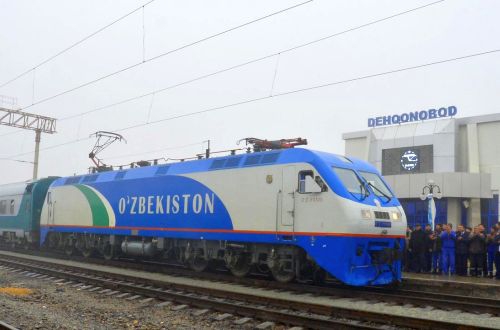The loan will support projects to increase capacity and frequency on the network. Work will comprise improvements to signalling and communications systems, as well as the provision of training to staff on modern railway management techniques.
Uzbekistan’s railway network carries 30%-40% of its freight and 3%–4% of its passenger traffic. However, most of the Soviet-era infrastructure is now deemed unsuitable for modern needs.
This latest round of funding will supplement a previous $US 80m loan approved by ADB in 2017 for the electrification of 145.1km of line between Pap, Namangan, and Andijan in the Fergana Valley.
The eastern Uzbekistan network consists of two main lines: one linking major cities in the Fergana Valley, and another running from Pap, via the Kamchik Pass, to Angren and Tashkent. The network also includes branch lines to Kyrgyzstan and Tajikistan.
The network is part of Transport Corridor 2 of ADB’s eastern Central Asia Regional Economic Cooperation (Carec) programme, which aims to improve connectivity and economic cooperation across the region.
The upgrades are also in line with the Uzbekistani government’s national development objectives, which aim to improve transport infrastructure in the country as a driver for economic development and liberalisation.
It is hoped that the upgrades will stimulate economic growth in the Fergana Valley and improve trade and regional connectivity, enhancing people’s access to health, education, and work opportunities. The project is also expected to boost tourism and trade between Uzbekistan and neighbouring countries.
“This expanded support will help ensure that trains on the modernised railway network operate safely and more frequently,” says Mr Ko Sakamoto, ADB’s principal transport specialist for Central and West Asia. “The project will enhance the attractiveness of railways as an environmentally friendly, reliable, and affordable mode of transport for the people of Uzbekistan.”

